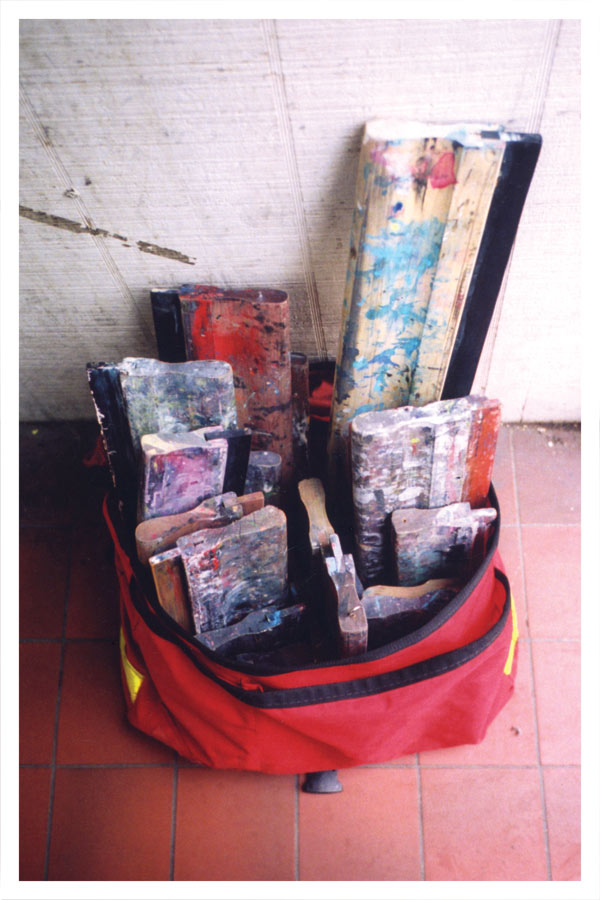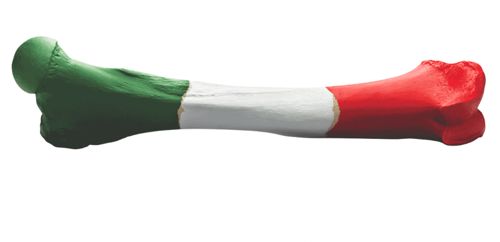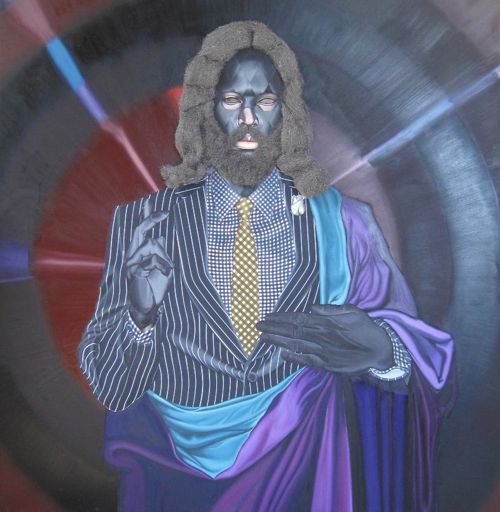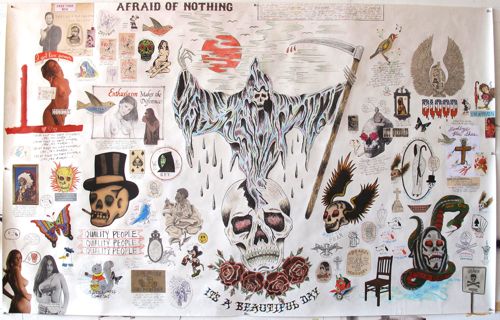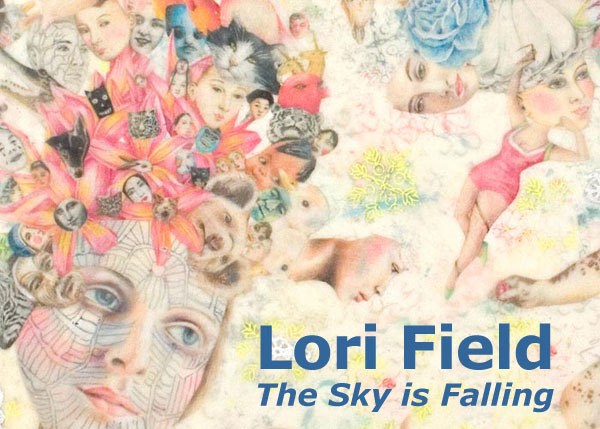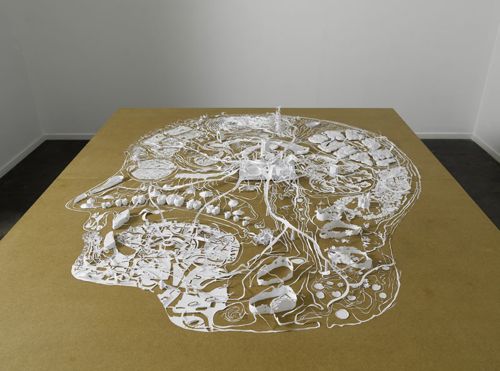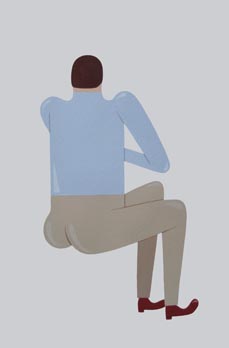
Month: September 2010
Kristján Gudmundsson
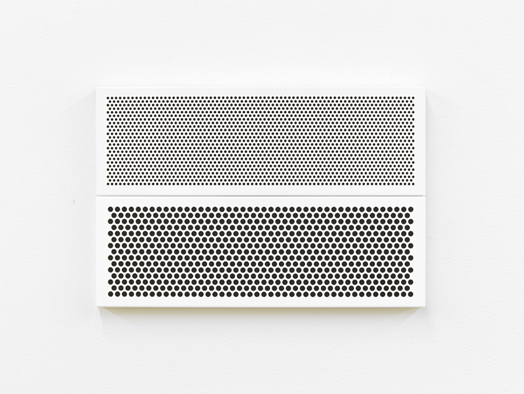
Kristján Gudmundsson (born 1941) is a pioneer of
Icelandic conceptual art, which is well known and
highly esteemed among all admirers of this genre.
It emerged around the turn of the 1960s and 1970s
among young Icelandic artists and in connection
with the Súm gallery founded by them in Reykjavik.
The genre is marked by intelligence, severity,
lyricism and humour. It is contemplative,
restrained and insightful, and refuses to accept
things as given. The world and its phenomena are
enigmas, for which art is really the only source
of precise, detailed and comprehensive answers.
Kristján Gudmundsson’s works have always employed
highly reduced forms. His critical thinking and
gaze have eliminated everything that is
unnecessary, simplifying, and leaving only that
which is necessary, and suffices, to be seen.
Gudmundsson works in an area where tensions are
generated when the non-existent comes into existence.
In their content, Gudmundsson’s works are
intellectual challenges, addressing a wide range
of scholarly, artistic and human issues. He has a
fascinating manner of combining seemingly
incommensurate things in his works. Colour may
turn into verbal expression, time can become
visual, and mathematical series of numbers may
refer to pleasures of the mind and the body.
Gudmundsson’s works stimulate intelligent viewers
and give aesthetes deep satisfaction. Their
refined humour appeals to some, while others find
appeal in their absoluteness in the manner of mathematical formulas.
In 2009, Kristján Gudmundsson received the
Carnegie Art Award, the largest art prize of the
Nordic countries, for his series “Paintings in
Gray and White Frames”. Works from this series
are included in the present exhibition, which is
Kristján Gudmundsson’s sixth at Galerie Anhava.
In these paintings of completely new type,
Gudmundsson combines in his typical fashion
elements appealing to different senses in
individual works. He uses industrially made
perforated metal frames that have been cut to
size, with monochrome painted soundproofing
material showing through the holes.
Standard-sized panels of this kind are normally
used for acoustic sound dampening in building
interiors. As often before, Gudmundsson has
appropriated here an everyday material developed
for practical needs, processing it into works
that not only charm the viewer with their elegant
proportions and the different reflective
characteristics of the materials but also arouse
interesting questions about the synaesthetic properties of the pieces.
Though differing in form from all of
Gudmundsson’s earlier works, the exhibits
nevertheless evoke a strange feeling of
recognition. The relationship of the colours,
shapes and different-sized holes of the panels
both among themselves and with other elements is
unconditional, indisputable and perfect.
Doubting Thomases
Naturaleza Muerta
Jordi Alcaraz
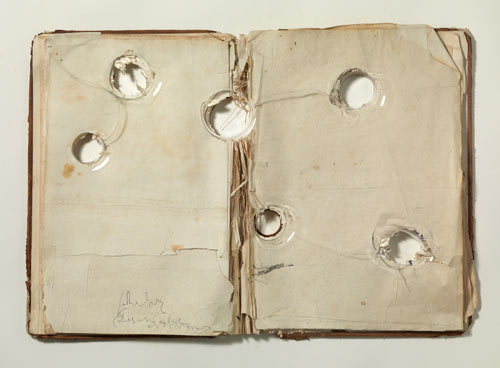
Galerie Stefan Röpke is pleased to announce its second solo exhibition for Spanish artist Jordi Alcaraz, on view September 3 to October 16, 2010.
With this new body of work, Jordi Alcaraz continues to play with dimension and spatial perception and illusion with a special attention on literature and the use of books. The essence of literature can be found in the written word laid upon paper. Ink is formed into letters, then into words, and further into text. As Alcaraz focuses on the material aspects of writing by reducing them to their physical elements for artistic and compositional purposes, there is a parallel between the work he creates and the literature that these materials represent; both transforming books, paper, and ink into windows for our imagination.
Jordi Alcaraz also continues to use familiar materials like plexi, mirrored orbs and substantial frames in creative and inventive ways to allow the play of light and shadows to be part of the compositions. And although the resulting works are serious and challenging, they are also always infused with humor and wit.
Jordi Alcaraz was born in Calella, Spain in 1963 and currently lives and works in Barcelona. His works have been shown at numerous exhibitions around the world, including the Museu de Pintura de Sant Pol de Mar and the Museu de Sabadell in Barcelona. A newly published and extensive catalogue will accompany the exhibition.
Jeff Sonhouse | Better Off Dead Said The Landlord
Wes Lang //
James Ryan @ Rod Barton Gallery
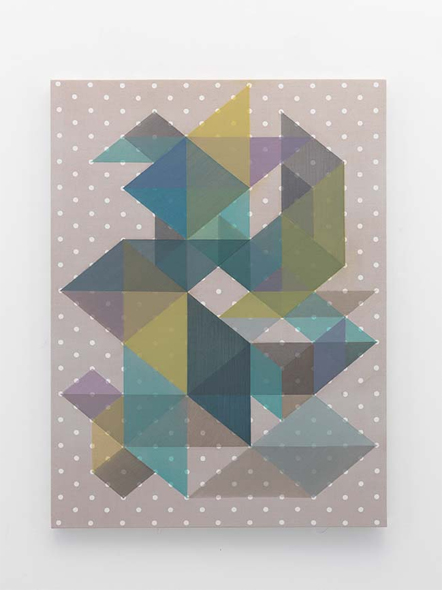
For his first solo show at Rod Barton Gallery, James Ryan presents a diverse body of new work.
The viewer is confronted with a collection of paintings that all seem to be running to their own irregular logic. These are paintings that unravel, inviting the viewer to slowly decipher and navigate their path through contradictory planes of translucent colour.
James Ryan’s paintings focus on the exploration of an implied three-dimensional space onto a physical two dimensional surface. Starting from simple line drawings or a photograph each painting is created using the same repetitive process of overlaid, transparent geometric forms which are allowed to develop intuitively by straying away from their source material.
As well as continuing to work with long standing motifs such as isometric cubes and freeform geometric structures, Ryan has introduced commercial patterned fabrics as painting supports which extend the readings of his work. On a material level the fabrics offer a ready-made grid of sorts, albeit in polka-dot or chequered gingham that generate domestic connotations. Visually however, the combination of printed pattern and painted geometric form produce odd visual moments and figure/ground relationships as design and paint freely interplay over the surface of the canvas.
The word Glitch is most commonly used in computing and electronics to describe a temporary fault in a system. The term is also used in video games where a player exploits a fault in the game’s programming. Glitch is exploited here in much the same way, referring to the optical and spatial irregularities generated by the painting process. Ryan’s looser areas of paint handling counteract the work’s hard-edged pretence. It is these faults and irregularities that produce paintings that are readable without being fully understandable, stationary without being fixed.
James Ryan was born 1982. He completed his MA in Painting at The Royal College of Art, London in 2007, since then has exhibited regularly in group exhibitions and has had two solo exhibitions at Studio 1.1, London, 2009 and the Corn Exchange Gallery in Edinburgh, 2008.
